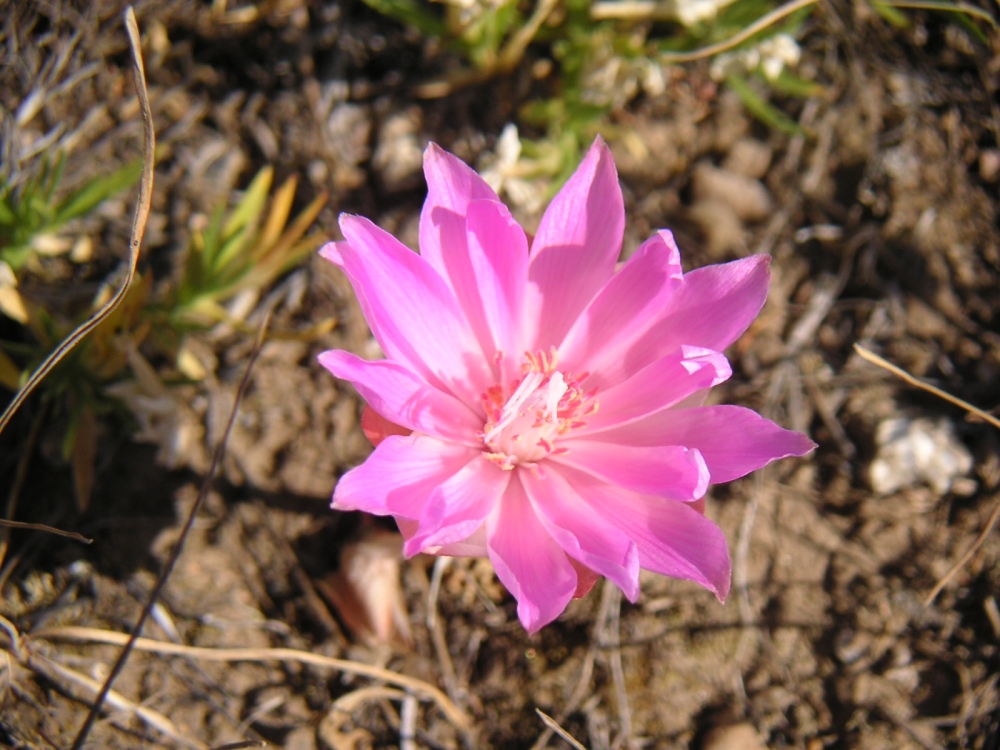Many of the native plants of Wyoming catch me by surprise because of their fragile beauty against the backdrop of rugged prairie and harsh conditions. This fragile elegance often disguises astonishing resilience and vigor. Take the case of Lewisia rediviva found in dry sagebrush habitat, displaying vivid pink blooms lying on the hot soil. Leafless, almost stemless, and breathtaking in it’s extravagance.
 Also called Bitterroot, this native plant of Wyoming, Montana, and much of the arid west was a food staple for Native Americans. The starchy root was harvested before flowering, the bitter out layers removed, and the root steamed or boiled. They were eaten plain or mixed with berries, Camassia quamash roots, or other foods. The roots could be dried and stored for months, and were even used as trade goods.
Also called Bitterroot, this native plant of Wyoming, Montana, and much of the arid west was a food staple for Native Americans. The starchy root was harvested before flowering, the bitter out layers removed, and the root steamed or boiled. They were eaten plain or mixed with berries, Camassia quamash roots, or other foods. The roots could be dried and stored for months, and were even used as trade goods.
 The name is derived from the fact that Meriwether Lewis collected the first specimens on the famous Lewis and Clark expedition of 1804. It has been recorded that Frederick Pursh who was commissioned with the task of classifying, preserving, and naming the hundreds of plant specimens collected during the expedition, accidentally spilled water on the long dried specimen and noticed that it showed signs of life. He planted it in soil and, although it never bloomed, it lived for another year. Pursh gave it the species name rediviva, which is Latin for revived, or live again.
The name is derived from the fact that Meriwether Lewis collected the first specimens on the famous Lewis and Clark expedition of 1804. It has been recorded that Frederick Pursh who was commissioned with the task of classifying, preserving, and naming the hundreds of plant specimens collected during the expedition, accidentally spilled water on the long dried specimen and noticed that it showed signs of life. He planted it in soil and, although it never bloomed, it lived for another year. Pursh gave it the species name rediviva, which is Latin for revived, or live again.